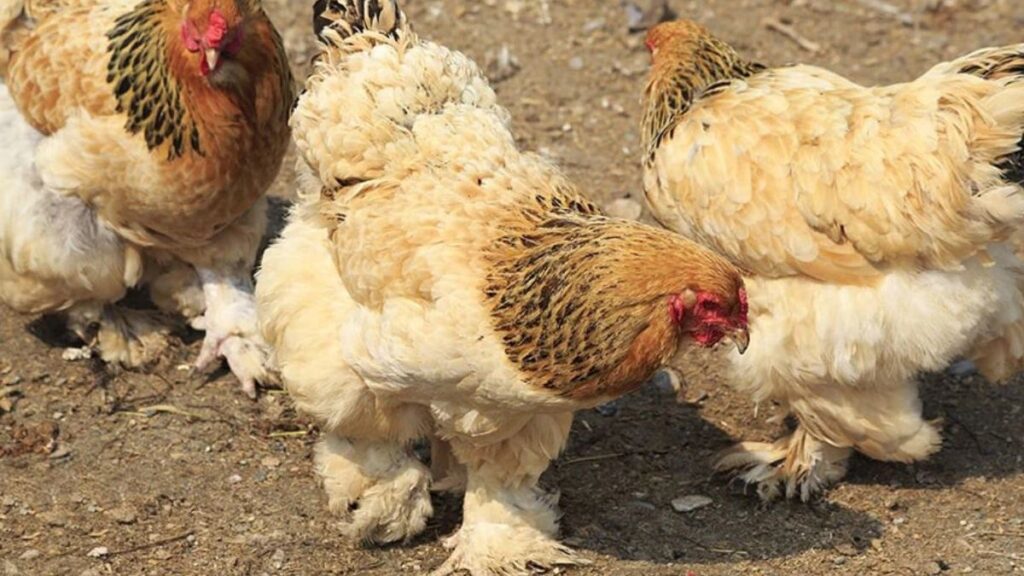The Cochin chicken: a living, breathing testament to indulgence in plumage. From its origins in the mist-laced landscapes of China to its triumphant arrival on Victorian drawing rooms, the Cochin chicken has captivated hearts with its voluptuous feathers and gentle demeanor. In this deep dive, we’ll explore every facet of the Cochin chicken—from its storied history and unique anatomy to modern-day husbandry practices and the breed’s enduring cultural cachet. Buckle up: this is poultry elevated to an art form.
1. Origins in the Orient
Long before the Cochin chicken strutted onto English exhibition grounds in the 1840s, its ancestors roamed the misty valleys of eastern China. Indigenous villagers prized these birds not only for their meat and eggs but also for their luxurious plumage. Known locally as “Celestial Pigeons” for their imposing size and ample feathers, early Chinese breeders began selectively pairing the fluffiest roosters and hens, seeking ever more extravagant feathering and docile dispositions.
By the mid-19th century, reports began trickling westward of enormous, feather-clad birds that looked more like walking pom-poms than chickens. Merchants returning from Canton (Guangzhou) and Shanghai brought live specimens aboard European vessels, hoping to dazzle aristocratic estates with these living curiosities. It was in 1845 that the first Cochin chickens disembarked on English soil, sparking a so-called “hen fever” that would sweep through Victorian high society.
2. Victorian Sensation: The “Shanghai” Craze
England, gripped by the Industrial Revolution, found in the Cochin chicken a charming antidote to soot-stained skies and mechanized monotony. The birds, first mislabeled “Shanghai” for their Chinese port of export, arrived in Baronial homes and stately manors, where they marched about lawns in pompous parade.
Newspapers of the era waxed lyrical. An 1847 issue of The Illustrated London News gushed:
“Never have we witnessed such grandeur of plumage upon the humble barnyard fowl; the Cochin chicken stands, truly, as royalty among its kind.”
Garden parties became tournaments of feather superiority. Breeders obsessively cross-matched their finest stock, and prices skyrocketed. By the 1850s, Cochin roosters could fetch sums rivaling prized thoroughbreds. The craze wasn’t merely about vanity—it represented a fascination with the exotic, a taste for the extraordinary in an age hurtling toward progress.
3. Anatomy of Opulence
What makes the Cochin chicken so theatrically over-the-top? It begins with their hallmark feature: profuse feathering from comb to claw.
-
Muff and Beard: Unlike most breeds, Cochins sport a thick “muff” around their face and a full “beard” beneath their beaks, framing their visage in an almost regal ruff.
-
Feathered Legs and Toes: Their feathering extends down thighs and shins, often enveloping the feet in a downy embrace. This botanical abundance gives the breed its signature “blooming” silhouette.
-
Round, Full Body: Cochins carry heft—mature hens weigh around 7 to 8 pounds (3.2–3.6 kg), while roosters tip the scales at 10 pounds (4.5 kg) or more. Their rotund frames aren’t just for show: ample breast meat and hardy constitution made them valuable dual-purpose birds in earlier eras.
-
Soft, Silky Plumage: Unlike the coarse hackles of fighting fowl, Cochin feathers are soft, loosely anchored, and almost pillowlike—ideal for insulation against brisk northern winters.
When a Cochin chicken paces across a yard, it does so with the stately confidence of a crowned monarch. Each step is cushioned by feathers, muffled by down, evoking visions of walking velvet.
4. Varieties and Colorways
Cochin enthusiasts revel in the breed’s chromatic diversity. Standard varieties, recognized by major poultry clubs, include:
-
Buff Cochin: A warm palette of golden-buff plumage that gleams in sunlight.
-
Black Cochin: Deep, lustrous ebony feathers with a green sheen under bright light.
-
White Cochin: Pure, unblemished white akin to freshly fallen snow—perfect for contrast against verdant garden backdrops.
-
Partridge Cochin: Intricate penciling of black, chestnut, and tan, creating mesmerizing patterns on each feather.
Beyond these, fanciers have cultivated mottled, barred, blue, and even lavender Cochins—each requiring careful selection to maintain the breed’s characteristic silhouette and plumage density.
5. Temperament: Gentle Giants
Despite their imposing size, Cochin chickens are paragons of tranquility. Several traits define their temperament:
-
Docility: Cochins rarely fret when handled. They readily submit to human touch, making them prime candidates for children’s first flock.
-
Broodiness: Hens frequently enter brood, nurturing not only their own chicks but also accepting eggs from other breeds—nature’s one-stop nursery.
-
Foraging Prowess: While not the most industrious scavengers, Cochins enjoy gentle wandering in pasture, scratching beneath leaves for morsels. They adapt well to free-range environments where they can indulge their natural curiosity.
-
Cold-Hardy: Thick plumage and feathered shanks grant them excellent insulation. Cochins weather sub-zero temperatures with aplomb, though wet conditions can mat their feathers—ample dry roosting space is essential.
Their placid disposition has endeared Cochins to urban homesteaders. Picture a backyard oasis where a trio of Cochin hens fluffs about ornamental shrubs, crowning the suburban tableau with living art.
6. Raising the Cochin Chicken: Best Practices
To coax the very best from your Cochin chicken, consider these husbandry guidelines:
Housing & Space
-
Coop Size: Allocate at least 4 square feet per bird indoors; ideal run space is 10 square feet per bird. Their bulk requires roomy quarters to roam and stretch.
-
Roosting Bars: Use low roosts—high perches can strain their joints when clambering.
-
Bedding: Opt for deep litter (pine shavings or straw) to cushion feet and insulate during cold snaps.
Nutrition
-
Starter Feed: Chicks need a high-protein (20–22%) starter from day one to develop robust frames.
-
Grower Feed: Transition to 16–18% protein at 6 weeks; overall maintenance feed by 20 weeks.
-
Supplements: Prebiotics and probiotics bolster digestion; crushed oyster shell ensures strong eggshells in laying hens.
Health & Maintenance
-
Ventilation: Feather density near vents and legs can trap moisture—ensure good airflow to prevent dermatitis.
-
Dust Baths: Provide ample dust areas with diatomaceous earth; helps control mites and lice.
-
Foot Care: Check for bumblefoot; feathers can hide minor injuries. Regular inspection under the shanks and toes is prudent.
7. Egg Production & Culinary Appeal
Cochin hens lay a modest clutch compared to hyper-productive breeds: expect 150–180 medium brown eggs per year. Yet, these eggs boast thick shells and rich yolks—ideal for baking and table fare alike.
In the kitchen, Cochin chicken meat melds succulence with subtle sweetness. Roasting a Cochin hen becomes a gala event: its generous breast and thigh yields melt-in-your-mouth morsels, while the feathered legs add rustic charm when trussed with herbs. Culinary artisans prize Cochin broth for its depth of flavor—the hearty base for soups, stews, and the occasional risotto.
8. Showcasing Plumage: The Exhibition Circuit
For the competitive breeder, the Coxcades, the judging standards are as exacting as haute couture. Judging panels assess:
-
Feather Density & Cleanliness: Every follicle counts—gaps or disheveled tufts incur penalties.
-
Body Conformation: Roundness of breast, fullness of tail carriage, proportional leg feathering.
-
Color & Luster: Even coloration, precise barring or penciling patterns, sheen on black varieties.
-
Temperament: A composed, calm bird reflects good handling and breeding.
Victories at premier shows like the National Poultry Exhibition can transform a modest breeder into a star. Grand champion Cochins attract sky-high stud fees and coveted hatchery contracts.
9. Cochin Chicken in Culture & Art
Beyond farms and fairs, the Cochin chicken has infiltrated literature, art, and even fashion. Victorian postcards featured chromolithographs of fanciful Cochin figures hosting tea parties. In the 20th century, avant-garde painters like Henri Rousseau depicted bulbous-feathered birds in lush jungles—an homage to the breed’s Oriental mystique.
Contemporary designers draw inspiration from Cochin plumage for haute couture gowns: fluffy skirts, ruffled collars, and layered textures mimic hen anatomy on the runway. From Alexander McQueen’s feather-trimmed jackets to Prada’s capsule collections, the Cochin chicken’s architectural contours find new life in fabric and form.
10. Challenges & Considerations
Owning Cochin chickens isn’t without quirks. Prospective keepers should weigh:
-
Feather Maintenance: In wet or muddy conditions, leg feathering can become a hygiene hazard—regular trimming around the shanks helps.
-
Space Requirements: Their size demands more feed and room compared to bantams or standard hens.
-
Slow Maturation: Cochins reach full feathering and adult conformation around 30 weeks—impatient breeders may prefer quicker-maturing breeds.
-
Broodiness Management: While natural setters are a boon for hatching, overly frequent brood cycles can curtail egg production. A warm lamp in nesting boxes can discourage excessive broodiness.
11. The Cochin’s Future: Conservation & Innovation
Though no longer the Victorian extravagance that once set aristocratic hearts aflutter, the Cochin chicken retains a devoted global following. Conservation societies like the American Poultry Association’s Heritage Breed Committee advocate for genetic diversity, ensuring that obscure color variants aren’t lost to commercial homogenization.
Simultaneously, urban and suburban homesteaders rediscover Cochins for their ornamental and familial appeal. The breed’s photo-worthy presence on Instagram and TikTok fuels a modern renaissance: influencers document henhouse tours, crafting tutorials featuring Cochin eggs, and vogue-inspired shoots with feather-adorned hens as co-stars.
Looking forward, geneticists explore subtle tweaks—dwarf Cochins that retain dense plumage in a smaller frame, or even silkier feather structures that heighten tactile allure. Ethical breeding practices emphasize health and temperament, steering clear of exaggerated traits that can compromise well-being.
12. Bringing Home Your Cochin Chicken
If you’re ready to invite these featherful sovereigns into your life, follow these first steps:
-
Research Reputable Breeders: Seek hatcheries or local clubs with healthy, well-socialized stock. Avoid “feather factories” that churn out birds with poor genetics or inadequate care.
-
Prepare the Coop: Confirm proper insulation, roost design, and predator-proofing. Keep leg-dense Cochins away from waterlogged runs.
-
Plan for Broody Hens: Decide if you want natural incubation or prefer to use an incubator—prepare accordingly.
-
Connect with Community: Join Cochin fancier groups online or attend local poultry shows to swap tips and network with seasoned keepers.
Welcoming a Cochin chicken into your flock invites more than utility—it ushers in a living piece of history, an emblem of aesthetic exuberance, and a steadfast companion whose gentle clucking lulls both farmhand and city-dweller alike.
13. Conclusion: A Legacy in Feathers
From ancient Chinese courtyards to cutting-edge fashion runways, the Cochin chicken has never ceased to mesmerize. Its journey—from exotic import to mainstream conservation darling—mirrors broader cultural shifts: our perennial appetite for the beautiful, the unusual, and the touch of whimsy in everyday life.
In every rustle of plumage, there’s a story of human imagination harnessed to nature’s gifts. The Cochin chicken stands as testament to our capacity for wonder, reminding us that even the humblest barnyard resident can don a crown of feathers and reign supreme.
Whether you’re a seasoned poultry aficionado or a weekend hobbyist seeking a feathered friend, the Cochin chicken promises a blend of grandeur, grace, and gentle companionship. Few creatures meld form and function with such panache—few earn their moniker as true feathered royalty quite like the Cochin chicken.
Embrace the bloom, cherish the fluff, and let the Cochin chicken reign over your heart (and your backyard).






